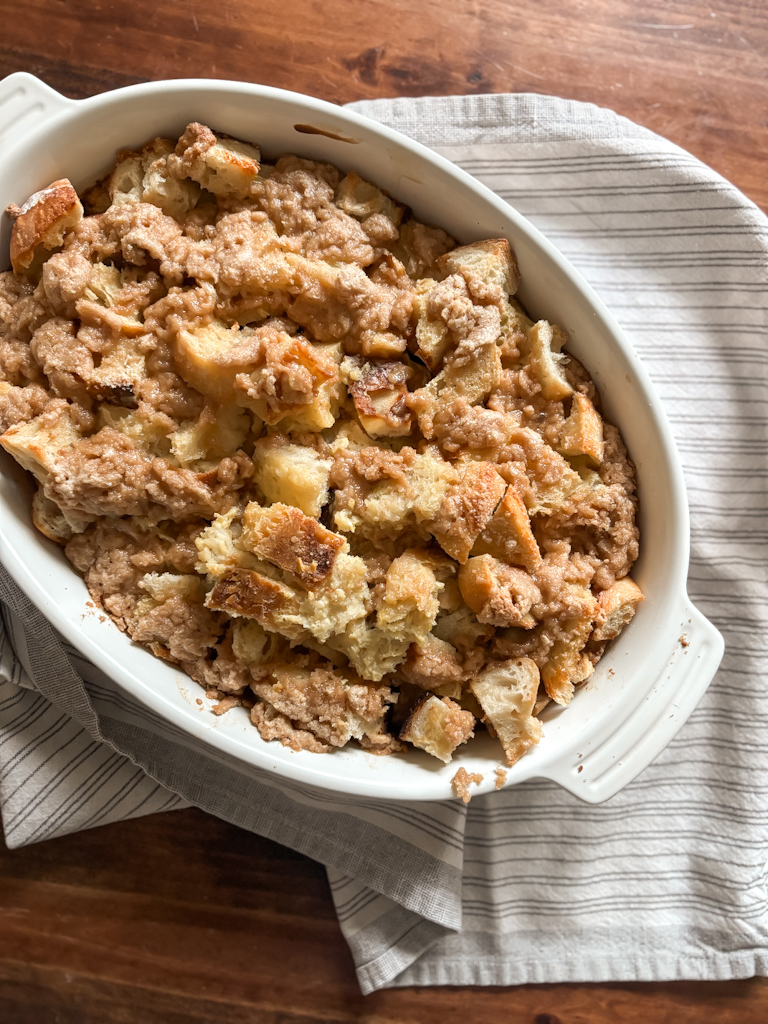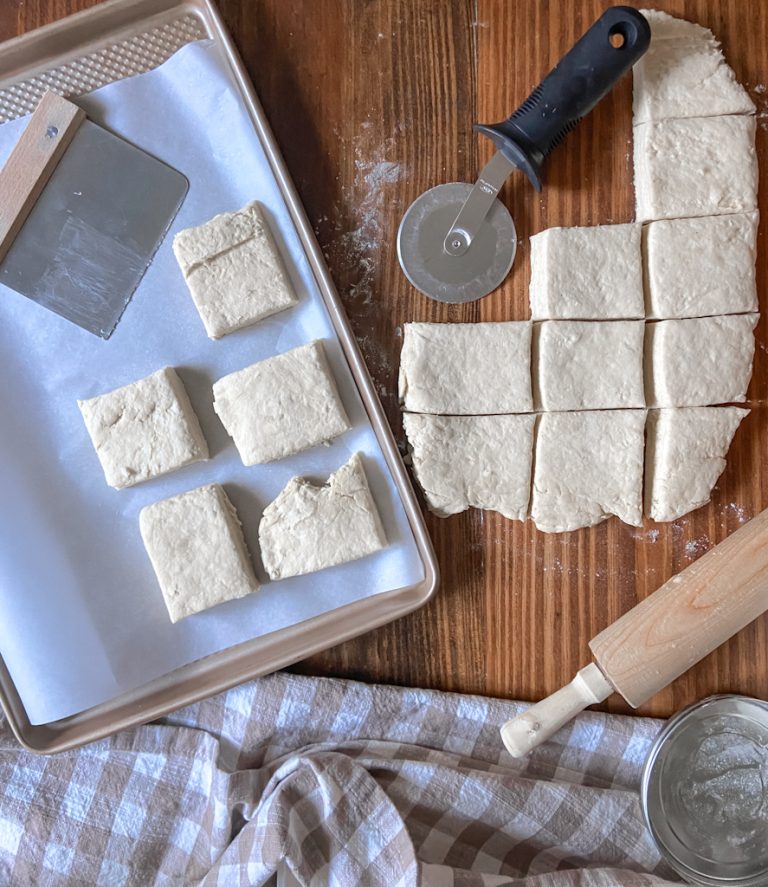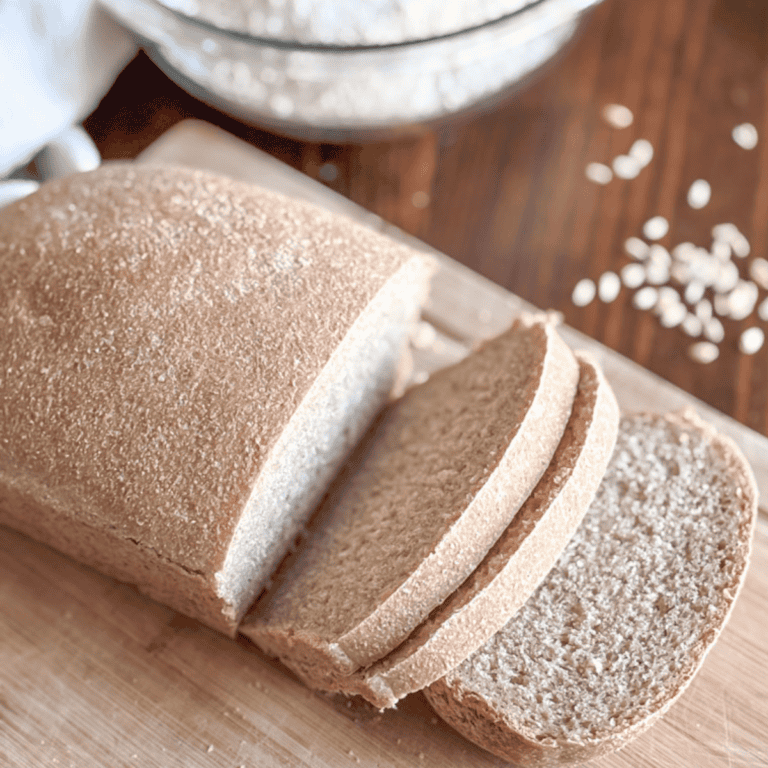How To Make A Sourdough Starter- Free Guide
Learn how to make your own sourdough starter with our free guide! This step-by-step process will help you cultivate a healthy starter, ensuring delicious, homemade sourdough bread. Perfect for beginners and seasoned bakers alike!
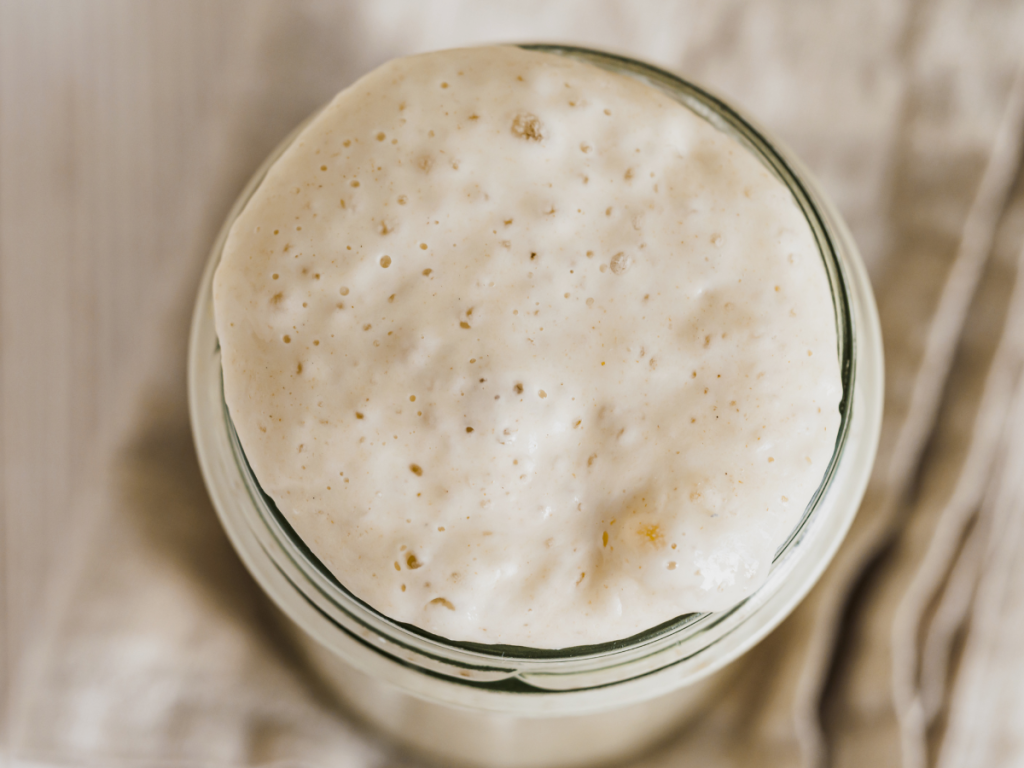
Making a sourdough starter is fairly simple but nurturing flour and water into an active culture can be confusing. That’s why I’ve made an illustrated graphic that will take you through the process day by day. In this post, I’m also addressing common issues as well as how to begin incorporating your starter in beginner-friendly recipes.
What Is A Sourdough Starter
You may be wondering “What is a sourdough starter?” and “Why would I need one?” A sourdough starter is a living culture of flour and water that captures natural wild yeast from the environment. As the mixure ferments overtime, natural leveaning agents develop and cause bread to rise.
Sounds crazy right? Crazy cool! Once you have a sourdough starter, it can take the place of commercial yeast in all of your baking recipes.
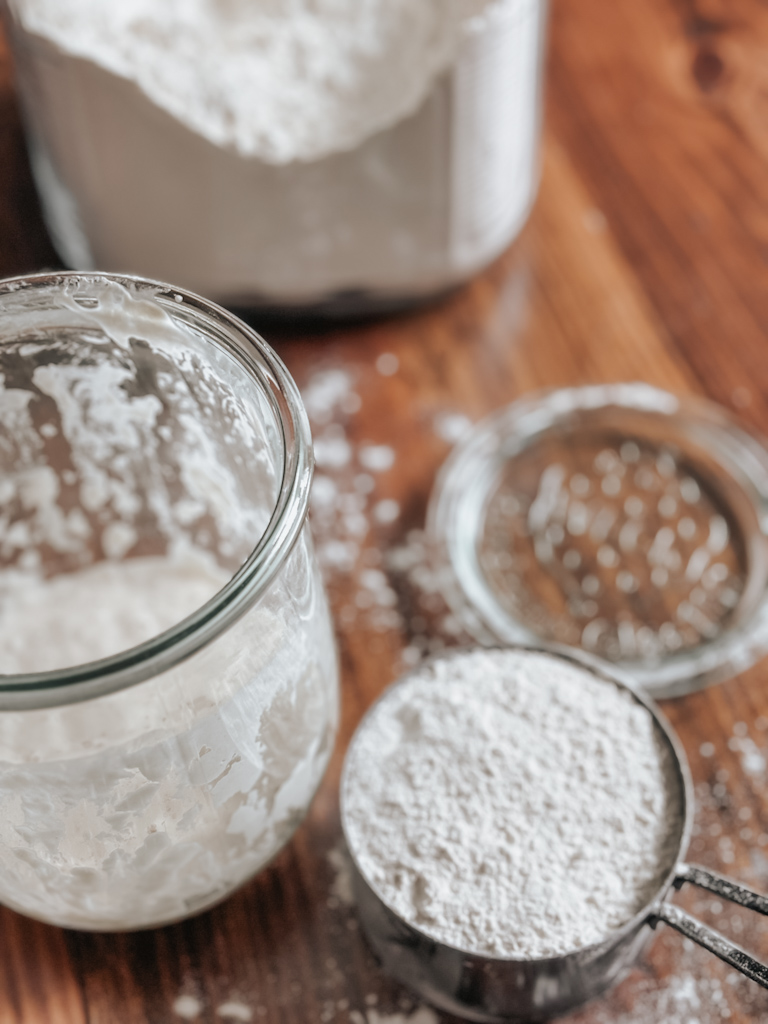
What You Need to Get Started
It’s incredibly easy to make your own sourdough starter! You literally only need 2 ingredients and 2 tools which you probably already have in your kitchen and my free guide.
Ingredients:
- Flour: For best results, I recommend you start with a high quality all-purpose flour like King Arthur brand. My personal prefeance is organic flour. It’s slightly more expensive but it’s grown without the pesticides and artificial fertalizers.
- Water: Filtered or distilled water is best with making a new starter. Just grab a bottled water when you’re out.
Tools:
- A wide-mouth glass jar or container for fermentation. Personally, I love my weck jar.
- A spoon for mixing.
Just a note, many breadbakers will suggest using a kitchen scale when making a sourdough starter. However, I’ve found that measuring using a scale just isn’t necessary. I prefer to keep baking simple by using the US standard measurement of cups.
This post may contain affiliate links. By clicking and making a purchase, I may earn a small commission. Please know that I only share products I use and love. My family thanks you for your support.
Step-by-Step Instructions
Once you’ve downloaded your free guide and gathered your ingredients and tools you are ready to make your very own sourdough starter!
Day 1: Establishing Your Starter
- Gather Your Ingredients: You’ll need quality all-purpose flour and filtered water.
- Combine Ingredients: In a clean jar, add 1 cup of flour and 1 cup of water.
- Mix Well: Stir vigorously until the mixture is smooth and free of lumps.
- Cover Loosely: Cover the jar loosely with a lid or cloth to allow airflow while preventing debris from entering. If you’re using a weck jar, cover using the lid but don’t add the clamps.
- Let It Rest: Leave the jar on your countertop for 24 hours. Aim for a temperature that’s not too cool or too warm.
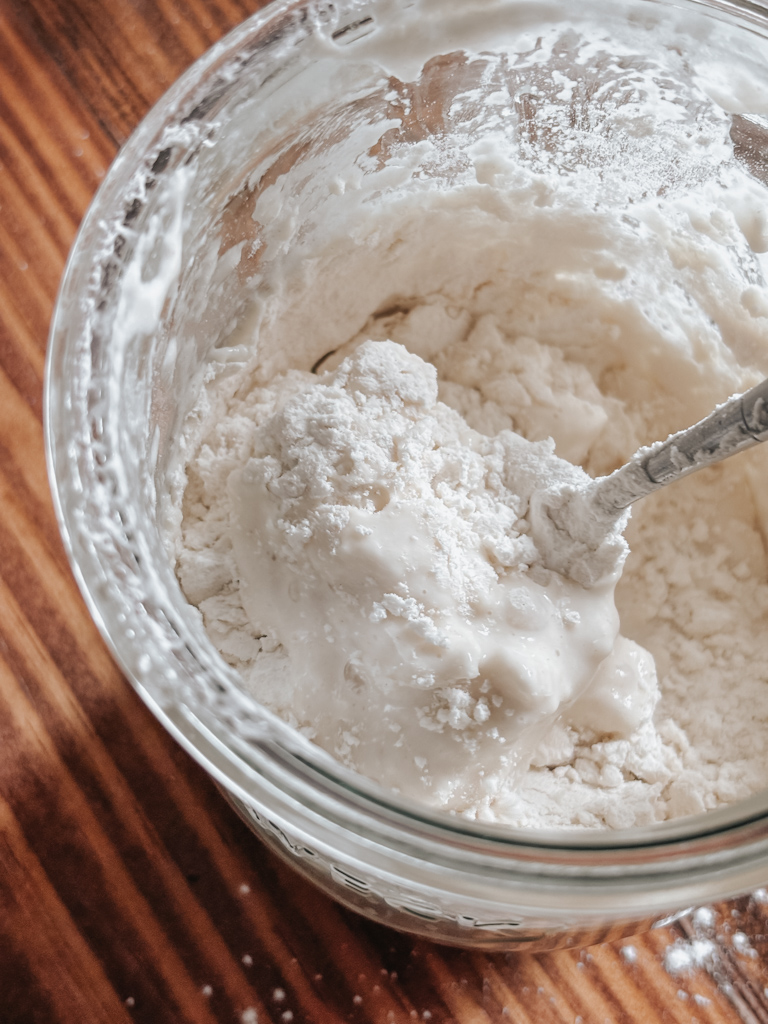
Days 2-5: Feeding Your Starter
Every 24 hours, repeat the process:
- Dispose of Half: Remove and discard half of the starter (about 1 cup). Just toss the discarded portion into the trash.
- Feed the Starter: Add another 1 cup of flour and 1 cup of water to what remains in the jar. Stir well and cover loosely again.
- Let It Sit: Allow it to rest for another 24 hours out on your kitchen counter.

Days 6-8: Twice Daily Feedings
Every 12 hours, repeat the process:
- Dispose of half of the starter.
- Add 1 cup of flour and 1 cup of water. Stir and cover loosely.
- Let it sit at room temperature.
Days 8 and Beyond: Testing for Readiness
After the last feeding on Day 8, wait 24 hours.
Perform the Float Test: Take a tablespoon of your starter and gently drop it into a glass of water.
Would you like to save this?
- Ready?: If it floats, congrats, you have an active starter and it’s ready to use for baking!
- Not Ready?: If it sinks, continue the feeding process every 12 hours until it becomes bubbly and active.

Tips for Success
- Use Quality Ingredients: Fresh flour and filtered water will give your starter the best chance to thrive.
- Temperature Matters: Keep your starter in a warm place, ideally between 70°F and 75°F, to encourage fermentation.
- Mark Your Jar: After day 5 begin noticing how much your starter grows by marking your jar with a dry erasemarker or rubber band. Ideally, you want your starter to double in size within 8 hours of feeding by the time your starter is ready to use.
- Patience is Key: Each starter develops at its own pace, so don’t worry if it takes a bit longer to get bubbly and active!
- DO NOT GIVE UP! My starter took 14 days of feedings until it was doubling and floating.
Sourdough Starter Maintainance
Maintaining a sourdough starter is key to ensuring it stays healthy and active. Regular feedings— every day if you prefer to keep your starter at room temperature or at least once a week if you plan on storing your starter in the fridge—are essential, as they provide the necessary nutrients for the natural yeast and bacteria to thrive.
For detailed tips and techniques on how to keep your starter in top shape, check out my free guide to maintaining a sourdough starter, which offers everything you need to know for successful sourdough baking!
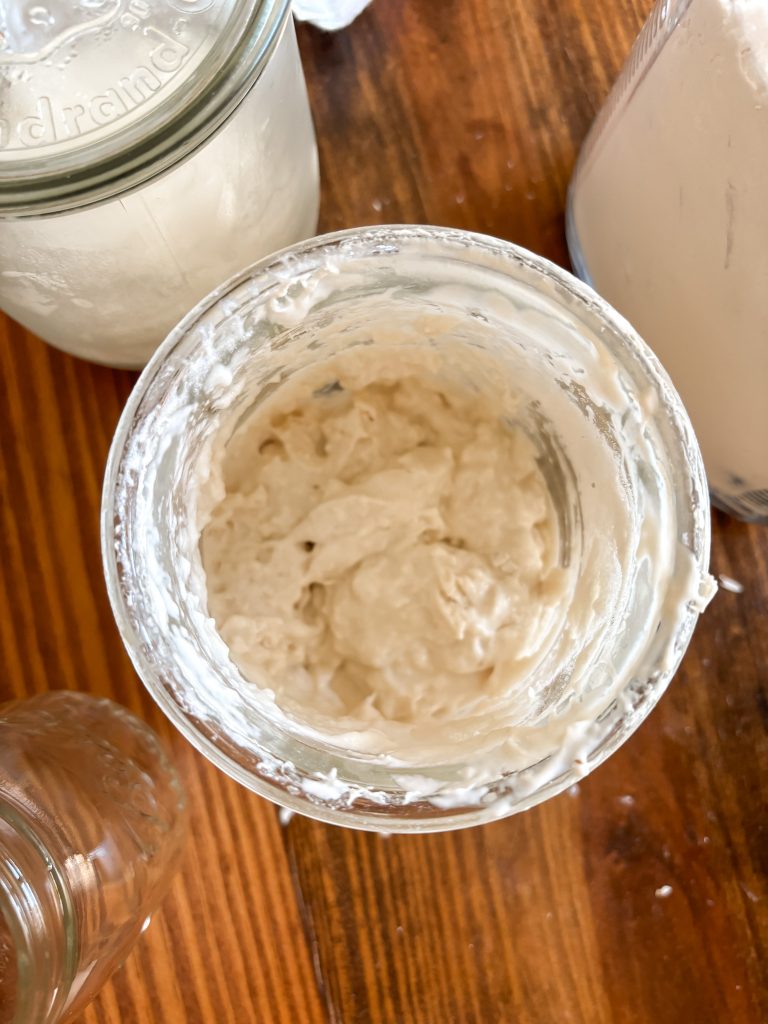
FAQ’s
These are commonly asked questions I receive through email, instagram, and post replies. You’ll probably ask yourself some of the same questions throught the sourdough making process. You are not alone! Feel free to reach out and I will do my best to help.
Can I use the discarded portion to make a new starter? Yes, you can, but it’s more practical to focus on establishing just one thriving and healthy starter. Once you have an active sourdough starter, it’s a good idea to keep any discarded portion in a separate jar labeled “discard.” This way, you can use it in various recipes and keep it as a backup starter if needed.
Should my starter stink? A sourdough starter may have a tangy or slightly sour smell, which is perfectly normal and indicates that the fermentation process is working. However, if your starter has a strong, unpleasant odor reminiscent of rotten or spoiled food, it may be a sign that it has gone bad. In that case, it’s best to discard it and start fresh. Regular feedings and proper care can help maintain a healthy starter with a pleasant aroma, so be sure to keep it well-fed!
Why is there liquid on top of my starter? The liquid you’re seeing is called “hooch,” and it indicates that your starter is hungry and needs to be fed. Since your starter is a living thing or culture, it requires regular feedings of flour and water to thrive. You can simply pour off the hooch and then feed your starter as needed.
Did I kill my starter? I doubt it! Sourdough starters are quite resilient and can often bounce back from periods of neglect. If your starter has been sitting for a while without being fed, it might look and smell a bit different, but that doesn’t mean it’s beyond saving. To revive it, simply discard half of the starter, feed it with equal parts flour and water, and give it some time in a warm spot. If you see bubbles forming and it starts to rise again, your starter is alive and well! Just keep an eye on it and ensure it receives regular feedings to maintain its health.
Troubleshooting Common Issues
The most common issue when establishing a sourdough starter is inactivity. Each starter is different and every home has unique bacteria and yeast, therefor no two starters behave the same.
What to do if your starter is sluggish or not rising:
- Adjust the Temperature: Ensure your starter is in a warm environment, ideally between 70°F and 75°F. If your kitchen is cool, consider placing the starter in a warmer spot to help it along.
- Hydration Levels: Check the hydration of your starter. If it’s too thick or too watery, adjust the flour and water ratios during feedings to achieve a smoother consistency.
- Give It Time: Sometimes, all your starter needs is a little more time to recover. Be patient and keep feeding it regularly.

Using Your Sourdough Starter
Once your starter doubles withing 8 hours of being fed and floats in water, you’re ready to make your first loaf of sourdough bread! There are so many recipes availabe but I recommend beginning with my favorite overnight sourdough bread recipe or this classic King Arthur sourdough bread recipe. Both recipes will guide you through the whole process of incorporating your healthy sourdough starter into baking bread and are beginner friendly.
Free Guide and Resources
Don’t forget to download your free step-by-step guide for establishing a sourdough starter! This guide is a fantastic resource to help you navigate the process and ensure you get off to a great start with your sourdough journey.
If you’re looking to dive even deeper into the world of sourdough baking, I highly recommend checking out my Sourdough Basics Course. It’s packed with tips, techniques, and recipes that will help you master sourdough baking and bring delicious, homemade bread to your table. Get started today and enjoy the wonderful world of sourdough!
Establishing a good sourdough starter is the foundation for delicious bread. Don’t be nervous. Just get started. Know that you will bake some not so great looking loaves along the way but actually getting in the kitchen is the best way to learn.
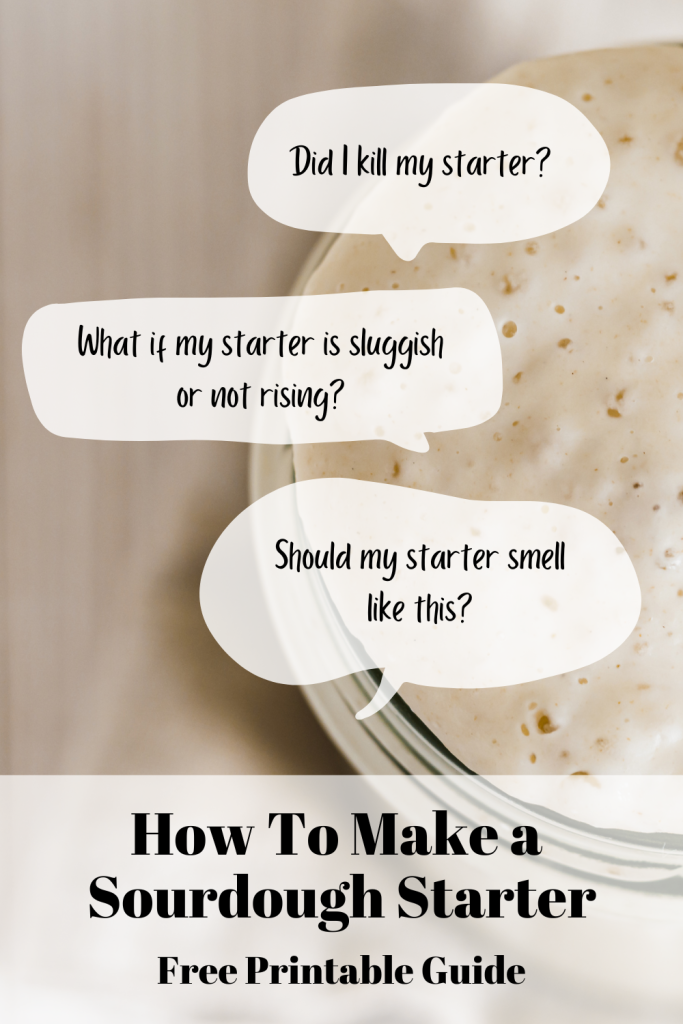
Experiment with different recipes and when you’re ready, dive into the world of sourdough discard. When you’re ready, check out check out this blog post on unlocking the full potential of your sourdough starter.
Once you’ve established your starter I have several recipes that you will want to try and I’d love for you to share your starter-making experinces in the comments.
